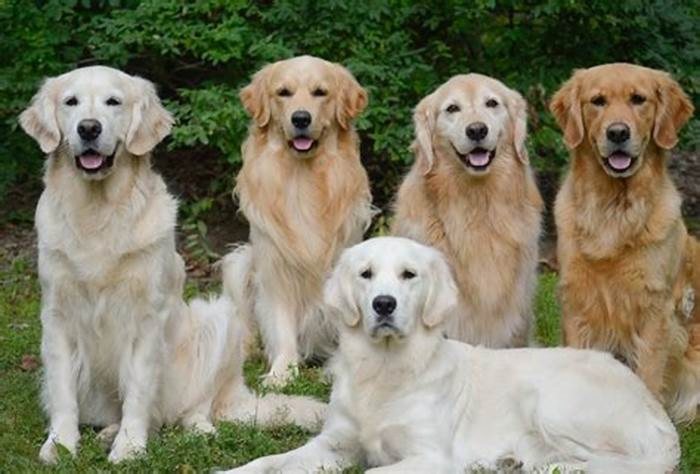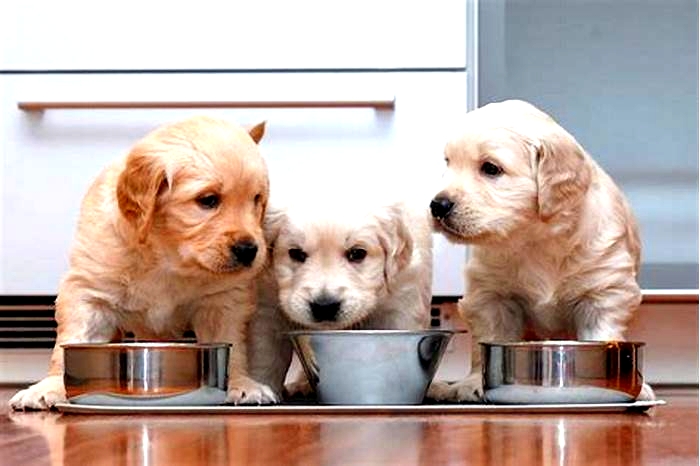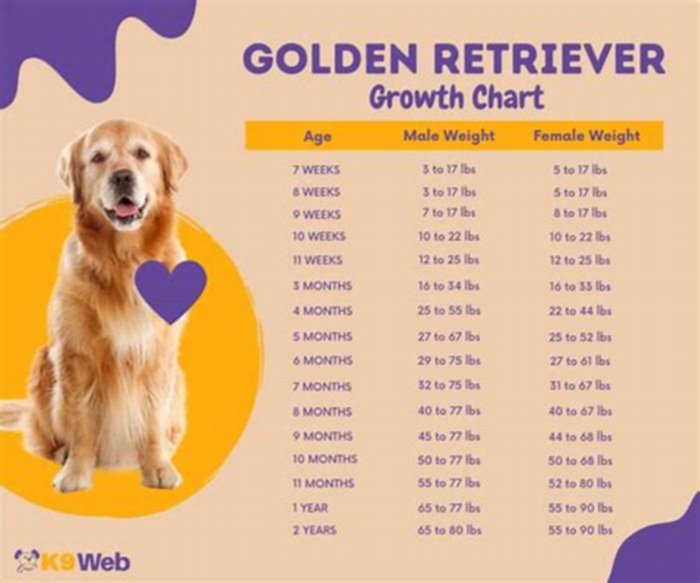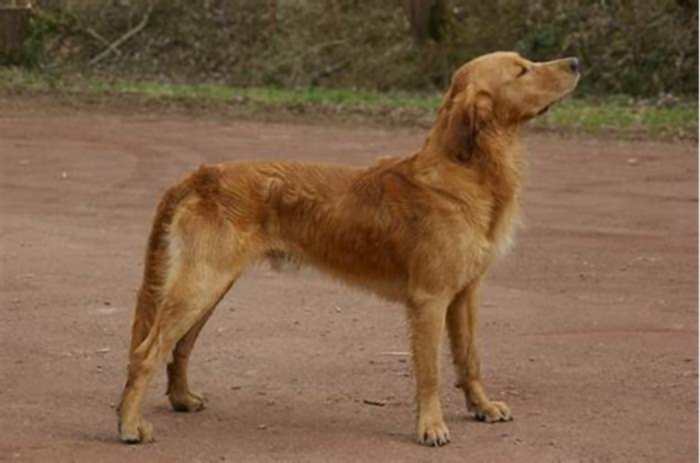How can you tell if a Golden Retriever is purebred

All You Have Ever Needed To Know About A Purebred Golden Retriever
Updated: May 16th, 2022
This article contains affiliate links. Read the full disclosure here.
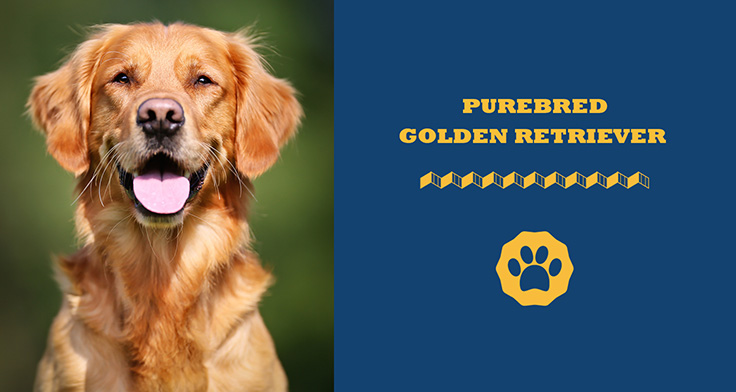
One breed you will fall in love with right off the bat is a purebred golden retriever. It doesnt matter whether you are a single individual or have a family, trust this sweet beauty to win your heart. Because its one of Americas favorite breeds, though, you have to be careful not to fall for the wrong one.
Dont take your breeders word as gospel when you are picking a pup. Take time to find out whether the pup is truly purebred. Dont know how to go about that? Ive got you covered.
Its also important for you to know this breeds history and other relevant facts; you are likely going to need all this info for various purposes at some point as a pet parent. I discuss it all and even answer some of the most pressing questions you may have about this dog. Shall we begin?
The History Of The Purebred Golden Retriever
Golden retrievers have a rich history. They trace their roots back to Scotland, where Lord Tweedmouth bred them for hunting. He was a keen waterfowl hunter but he also wanted a dog that could be loyal, friendly, and even-tempered while at home.
Thats what led him to buy Nous, a yellow retriever, which he cleverly bred to Belle, a Tweed water spaniel. Belles descendants were then bred with another Tweed water spaniel, and a red Irish setter was added to the mix.
All this happened between 1840 to 1890. Tweedmouth kept a breeding record that now shows what he was trying to achieve a hunting dog that also had the traits of a family pet.
Even though now extinct, Tweed water spaniels were ardent retrievers and in the home they were friendly, loyal, and calm. Todays goldens share the same attributes.
Tweedmouth gave some of Belles descendants away and kept others, specifically the yellow puppies, which he continued to breed. It wasnt long before his breed gained the interest of sports hunters and show fanciers. They all fell in love with the dogs retrieving abilities, beauty and other traits.
Englands Kennel Club officially recognized these retrievers as a breed in 1911. Back then they were simply known as retrievers, but in 1920 their name was changed to golden retrievers.
Fast forward to 1932, when the American Kennel Club (AKC) registered the golden retriever as a breed too. In the following years, the AKC changed the Golden Retriever breeding standards to suit the tastes and needs of Americans. Right now, goldens are a popular breed in the US, rivaling Labradors, German shepherds, and French bulldogs.
How To Identify A Full Breed Golden Retriever

Top on the list of ways to identify a pure golden retriever is to check whether it has the right paperwork and pedigree. Proper documentation is proof that the dog has been registered with a well-recognized kennel club or certified registry that keeps records for that specific breed. Meet the three types of golden retrievers.
In North America, the American Kennel Club (AKC) is the largest and most popular kennel club but there are a few other legitimate registries as well such as:
- Canadian Kennel Club
- United Kennel Club
- Continental Kennel Club
For a pup to qualify for documentation, its parents must have been listed with a certified registry. A dogs pedigree is like its family tree, which should date back four generations or more and be properly documented. The ancestors names should be featured in the paperwork.
Heres what the paper should contain:
- The dogs name plus registration number
- Colors
- Markings
- Health-related information
- Competition titles its parents or ancestors held
In instances where you have a pup that lacks documentation, ask the breeder or whoever sold it to you to hand over the correct papers to you. Once you obtain them, you only have to pay a small fee, fill up the registration documents and mail them to the relevant registry for processing.
Thats one way to identify a full breed golden retriever; unfortunately, its not enough to tell how your pup will turn out. To be one hundred percent sure that your golden is purebred, check to see if it has the features that define such a breed. These are the unique characteristics purebred golden retriever puppies should have.
Unique Attributes A Golden Retriever Purebred Should Have
Size & Body Structure
Male golden retrievers weigh between 65 to 75 pounds and have a height that ranges from 23 to 24 inches. Females, on the other hand, weigh between 55 and 65 pounds and are usually 21.5 to 22.5 inches tall. Both genders reach full height after turning one-year-old and mature weight by the age of two.
Structurally speaking, goldens have a symmetrical muscular build and look very athletic. Size-wise, they are classified in the medium to large category. Also, note that their hind limbs are strong and straight while the shoulders are well-built and rugged.
Personality
Goldens are defined by their sweet, soft, easy-going demeanor. They get along well with pretty much everyone, including kids, and are always eager to please the owner, but these and other great attributes will only be apparent if you train and raise them well.
Coat & Hair
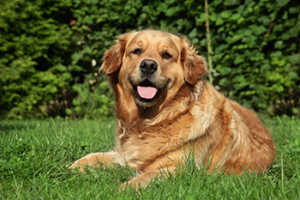
Full-blooded golden retrievers come in different shades of gold, from pale to dark. You may have seen some breeders and puppy mills classifying some as rare white, platinum or English cream, but understand that these arent special or rare; these are European-bred goldens.
All goldens have a thick undercoat and a dense outer coat that is resistant to water and requires regular grooming with one of the best brushes for golden retrievers. Some have wavy coats, while others are straight.
Their fur feathers on the chest, underbelly, along the tail, and on the back of their front limbs. Shedding is heavier in the fall and spring and moderates in the summer and winter.
To keep their beautiful coats in top shape, clean, and free of fleas, use one of the best flea shampoos for dogs.
Other special characteristics of purebred goldens to watch out for include:
- Short ears that can fold over
- Fairly or dark brown medium-large eyes with dark eye rims
- A thick tail that is muscular at the base and curved upwards at the end
How Long Do Purebred Golden Retrievers Live?
Based on statistics, golden retrievers have been found to live an average of 10-12 years; however, if you go the extra mile in taking proper care of your golden, she can live longer than that. Augie, the oldest known Golden retriever, passed away at the age of 20.
Just as a reminder, taking good care of a golden retriever involves the following:
- Proper diet
- Appropriate exercise
- A loving home
- Socialization
- Great healthcare
Frequently Asked Questions
How much is a purebred golden?
Legitimate and trusted breeders price their goldens anywhere between $1500 and $3500. The price could be as low as $500 if you choose to buy from no-name breeders and puppy mills, but be aware that the risk is higher on this side. Your purebred golden retriever puppies could end up suffering health problems later.
How do you get a full-blooded golden retriever?
It may be tempting to simply do a search and order a pup from the first breeder that shows up on your search engine but I wouldnt recommend this option. Instead, contact the AKC or a certified registry near you and ask them for a referral to a trusted breeder. I cover more tips you can use here.
Can a purebred golden retriever have white on them?
Golden retrievers are never entirely white. Some may have white patches on the chest and/or toes, but thats the most you may get today. English cream golden retrievers come close but they are still not white. Their coat color ranges from pale cream to dark gold.
A Last Word On Purebred Goldens
Pure golden retrievers are excellent dogs that get along well with everyone, from children and single individuals to families. If you are thinking of getting one, rest assured that you will have a great companion. Just make sure that you are ready to take proper care of them, because this is what will give you the best possibility of a longer lifespan for them.
Three things you should never forget about golden retrievers and which will help you identify one are:
- They are sweet, loyal, calm, and eager to please the owner
- They come in different color shades, ranging from pale cream to deep gold
- They are muscular and athletic with a medium-large size body
Also important to mention is that goldens love being around people and need regular exercise to prevent destructive behavior. They are also prone to a few health problems, but with proper care and help from a vet, you will be able to help them live a comfortable life.
How To Tell If A Golden Retriever Is Purebred

Lets look at some reliable methods to determine if your golden retriever is purebred before you go to the pet shop or contact a breeder.
Purebred Documents
Purebred dogs are the result of carefully bred dogs that have been registered with documentation.A proper pedigree and paperwork are two of the best ways to determine if a golden retriever has been purebred.American Kennel Club (AKC) is the largest American dog registry.AKC-certified pedigrees contain:
- The registration number and name of the dog.
- Markings and colors
- The pups ancestors held competition titles.
- All health-related information.
How to Identify a Purebred Golden Retriever without Paperwork
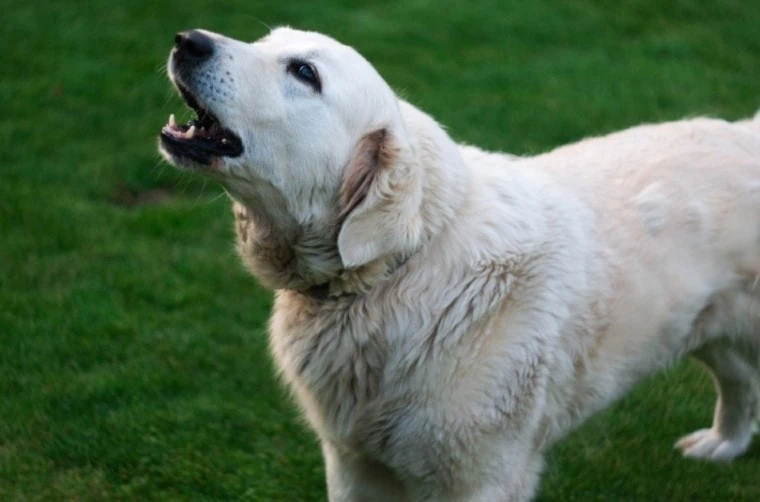
A pedigree is not necessary. It can help you to determine if your dog has any health issues.A pedigree will not make your golden retriever more loving, loyal, or friendly.Without proper paperwork, how can you tell if your dog is apurebred Golden Retriever?
This can be a difficult task, if not impossible.The size, shape, thickness, and colors of golden retrievers are varied.These are just a few of the ways that you can tell if your dog is purebred and not registered.
What to expect from a Purebred Golden Retriever
Although there are some cosmetic differences between golden retrievers, most have many common traits.These are the main characteristics that make up the golden retriever breed.
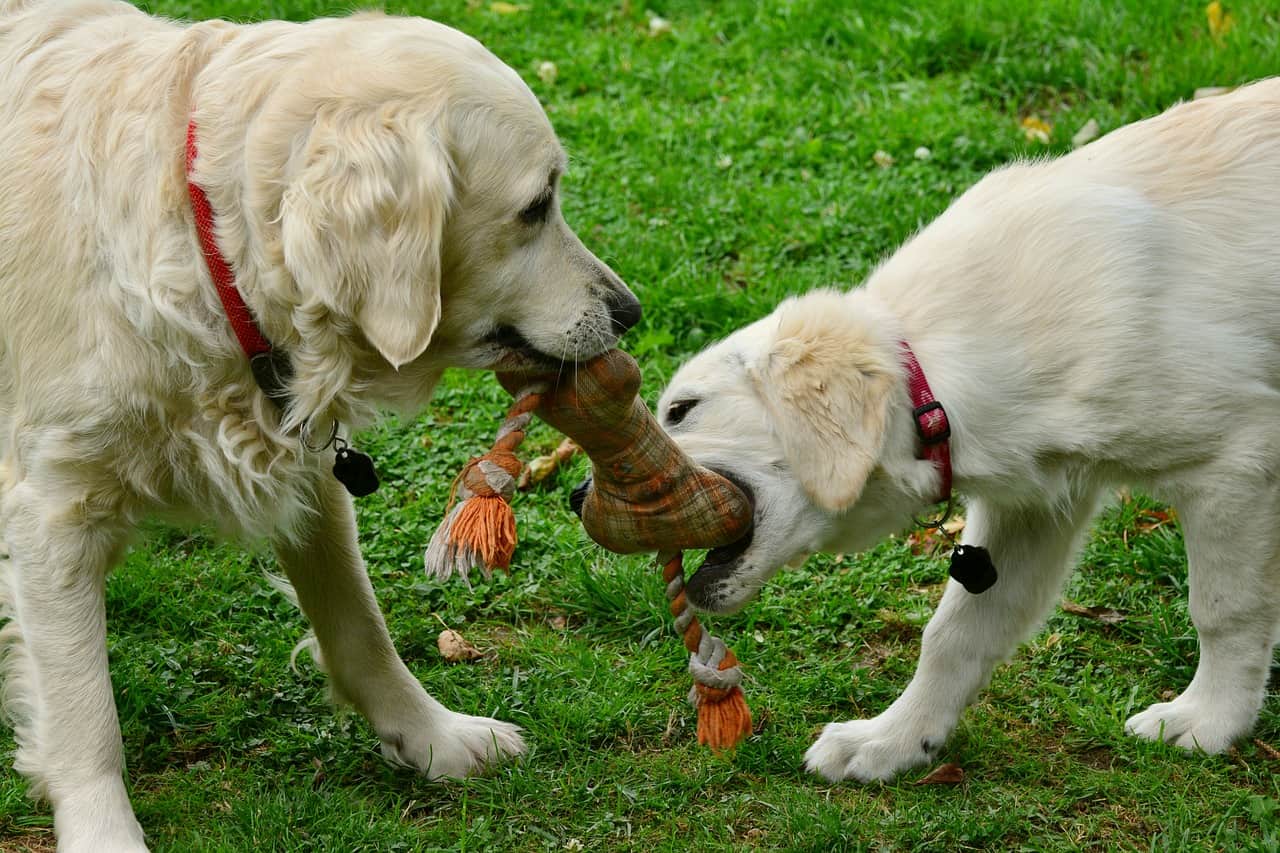
- PersonalityGolden retrievers have a playful and gentle personality. They are easy to get along with strangers and other pets.They love to please and will often respond to obedience training.They are also affectionate, intelligent, and even-tempered.
- ColorThe signature golden coat of the golden retriever can be displayed in a variety of colors: dark golden, light gold, cream golden or red golden.
- Tail: The tails of Golden retrievers are long and reach the hock, but not below.It can vary in length and range from 4-12 inches.Some dogs have longer, fluffier tails than others. Others have more feathering.
- Ears Golden retrievers have short, folded-over ears.
- Hair and coat: The outer coat of a golden retrievers golden retriever is dense, water-repellent, and thick.You can have your hair straight or wavy.The back legs of golden retrievers are feathered, as well as the tail and chest.
Where can I get a purebred Golden Retriever?
A trusted and reputable breeder is necessary if you are looking to adopt apurebred golden retriever.Golden Meadows Retrievers is an AKC Breeder of Excellence with more than 25 years of experience. We breed and train golden retriever puppies in loving homes all over the country.To make sure they are a wonderful addition to your family, our puppies get early socialization and training.
Purebred Dog Identification
You cannot tell if you have a purebred dog by looking. A purebred dogs appearance might match the breed standard, but it might not. I give an example below, of one of my own Labradors that does not meet the breed standard, despite having an impeccable pedigree.
And in the same way, it is entirely possible for mixed breed dog to look purebred if they meet the breed standard. I give an example below.
A purebred dog comes from parents that are both registered members of the same breed. Purebred dog breeds have a lineage that has been selected for generations to have certain personality and physical characteristics. But breeding is not an exact science and there is plenty of scope for variation.
Your purebred dog might have unusual markings or a coat color that isnt standard, but still be 100% the real deal. So if appearance isnt enough to go on, how else can we ensure our dogs are purebred? I explain what your options are below, and look at some of the interesting variations that we find within the Labrador breed.
Contents
Is My Dog Purebred?
Purebred dogs can be identified in three possible ways:
- Can you tell by looking?
- Pedigree papers
- DNA testing
Looking For Purebred Dog Characteristics?
Purebred dog characteristics are not a certainty when it comes to identification. I have a steady stream of people coming to my forum, posting questions in the comments boxes at the foot of my articles, and writing emails to ask: is my dog purebred? The question is very often accompanied by photographs, or detailed descriptions of the characteristics of the dog.
A visual assessment is what most of my readers are hoping I will give them when they send me photographs. So what exactly is a visual assessment of a purebred Labrador?
Purebred Dog Characteristics
A visual assessment of pedigree involves looking at a dog and comparing his appearance with the breed standard. This involves a detailed knowledge of the breed standard. I dont usually give these kinds of assessments because the value of them is so limited. It doesnt really prove anything, it just tells the owner that I think their dogs has the look of a purebred Lab.
Purebred Lab Breed Standard
Breed standards vary slightly from one country to the next. So, here, we will just be focusing on the AKC breed standard. This standard says that a purebred Labrador Retriever should weigh between 55 and 80 pounds, growing to between 21.5 and 24.5 inches tall.
The three recognized colors are yellow, black, and chocolate. But, yellow is accepted in a variety of shades. My own yellow Labs are a dark redish color, while Labs from show lines are often paler. Dilute colors and mismarks can be AKC registered but are disqualified from the show ring. Other key physical traits include a short, dense coat, an otter tail, broad skull, and kind eyes.
Purebred Dog That Looks Like A Hybrid?
Visual assessments of purebred dogs arent always accurate. I want to give you a couple of examples to illustrate the problems involved with this approach. So, lets look at a purebred dog that doesnt fit the breed standard, and a crossbreed that looks like the breed standard says a purebred Labrador should.
Example 1 Purebred But Doesnt Look It
One of the Labradors in my home bears little resemblance to the breed standard. She has a thin, whippy tail with an upwards curve, overlong ears and a long narrow face.
These features, combined with her ginger coat mean that very few people recognize her as a Labrador at all. I have been asked if she is a Vizsla cross, a Lab x Greyhound, and other unlikely combinations. In fact this purebred Labrador Retriever has an impeccable pedigree full of noble ancestors with famous names. But if someone made a visual assessment from a photo of her, unless they were familiar with working line Labs, they might well put my girl down as a crossbreed.
Example 2 Mix That Looks Like a Purebred Dog
I have a friend with a Labrador X Pointer that looks for all the world like a classic Labrador. The father is a show line lab, and his looks have dominated in this particular dog. A visual assessment would wrongly put him in the purebred category when he is actually no such thing. Mixed breeds like this can inherit any blend of traits from their parents. So, crossbreeds can look just like a purebred Lab, even though they arent.
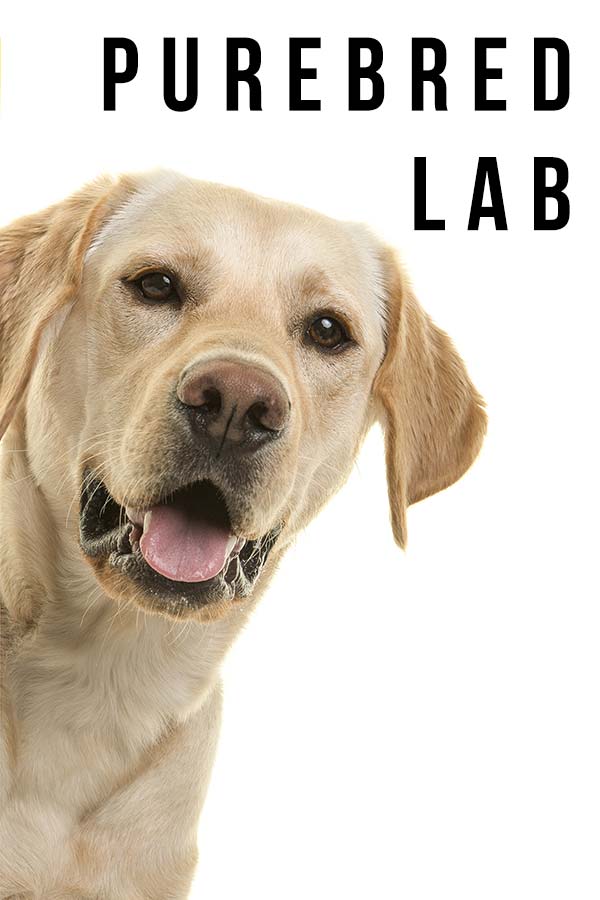
Are Visual Assessments Any Good?
I hope you can see from these examples how worthless visual assessments usually are. While I can point out that your dog may have faults that will eliminate him from the show ring, I cannot possibly tell you whether or not he is purebred by looking at him.
Purebred Dog Colors
Can you tell if you have a purebred black Lab or a purebred chocolate Lab from their color alone? Unfortunately the answer here is no. Labs arent the only dogs that come in the colors yellow, chocolate, and black. So, a mixed breed could easily have a solid coat in one of these colors.
Do purebred Labs have white on them?
The current Labrador breed standard is very clear on what a purebred Labrador should look like. But not all Labradors meet that standard. Sometimes a mismark (a mark that is prohibited in the breed standard) occurs because the Labrador isnt purebred. But equally a mismark can occur in purebred Labrador Retriever puppies too.
Common Lab Mismarkings
Big white chest patches are fairly common in mismarked Labs. My own red Labs mother had one, and a few white hairs on toes or under the chin are not unusual either. One of the puppies in a litter I bred had two white toes. This was a purebred litter with a great pedigree. It is even possible to get a purebred Labrador with tan points (like a rottweiler) or patches of brindle fur.
These types of puppies are genetic accidents and the puppies are usually sold as pets to owners who appreciate their unusual friend.
Purebred Dog Pedigree Papers
If you buy a purebred dog, the breeder should give you the registration document with the names of both parents. Most breeders will also give you a copy of the pedigree which lists the ancestors of those parents, together with any titles they may have, back through five generations.
Pedigree Papers Have Limitations
If you have the correct pedigree papers, then your puppy is probably a purebred dog. I say probably because there is room for dishonesty with this system. It is possible for a dishonest stud dog owner to mate his female dog to one stud dog and register the puppies to another.
So, pedigree papers are a good indication of pedigree, and sufficient for most peoples needs, but they are not an absolute guarantee. Which brings us to our final method, DNA identification.
How to tell if your puppy is full blooded by DNA Identification
It is now possible to have some dogs DNA checked for identification purposes. There are various laboratories offering this service.

Purebred Dog Identification
So, to sum up, as visual confirmation of pure breeding is not possible, you need to use pedigree papers, and/or DNA results to confirm whether or not you have a purebred dog. Here is what I suggest you do:
How To Know If A Puppy Is Purebred Before Buying
If your heart is set on a purebred dog, before you purchase your puppy make sure the paperwork is in order. This greatly reduces the chances of your dog being cross bred. Ask to see the registration documents! Do not accept any excuses, your breeder must have registered the litter in order for you to be able to register your puppy.
Meet the mother and make sure that you like the way she looks. If you cant meet the father make sure you see photos and a certificate of mating that confirms he is actually the father.
 (paid link)
(paid link)If the puppies have markings on them that you dont like, then dont buy a puppy. There is always another litter. Let someone else who loves unusual markings buy that puppy. It is possible to find a purebred black Lab with white markings, or a purebred chocolate Lab with brindling. Remember, the only problem with buying a mismatched puppy is that you wont be able to enter him in a dog show. If that doesnt matter to you, it certainly wont matter to him.
After Buying Your Purebred Puppy
Once you have purchased your puppy try not to worry about whether or not he is purebred. Remember that many purebred dogs have mismarks or poor conformation, so if you have pedigree papers for him, he is probably purebred no matter what he looks like.
Try to ignore any other people that criticize your purebred dog, or try to convince you he is not a purebred. After all, the most important thing is that your dog is happy, healthy, and a great addition to your family.
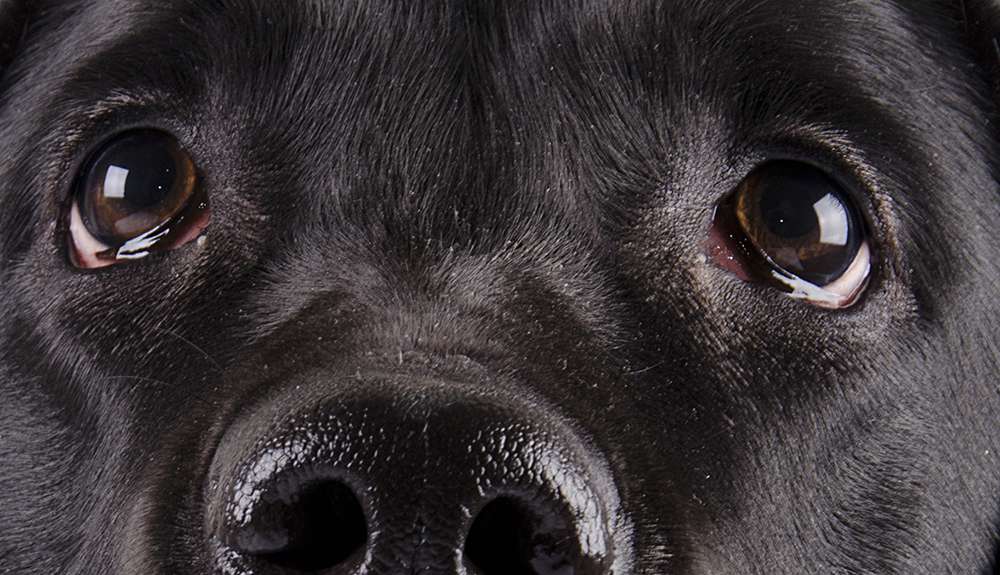
The Labrador Site Founder

Pippa Mattinson is the best selling author of The Happy Puppy Handbook, the Labrador Handbook, Choosing The Perfect Puppy, and Total Recall.
She is also the founder of the Gundog Trust and the Dogsnet Online Training Program
Pippa's online training courses were launched in 2019 and you can find the latest course dates on the Dogsnet website




